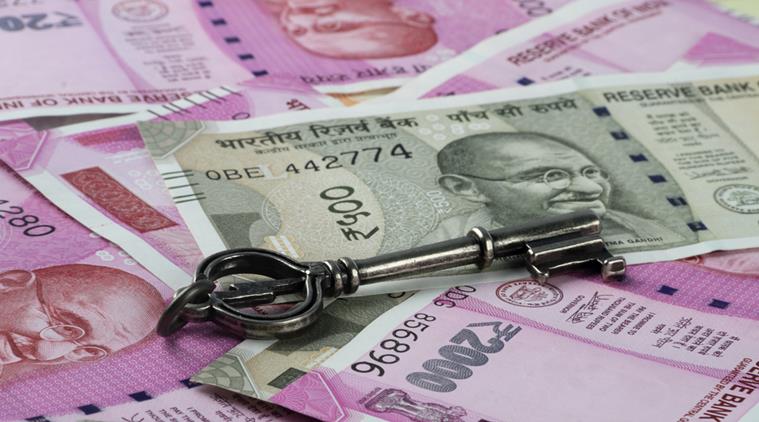India’s Dutch disease?
With volatility in global currency markets up again, debate on rupee’s correct value has restarted

With volatility in the global currency markets up again, and the rupee already one of the weakest currencies in the world this year, the debate on the rupee’s correct value has restarted.
“Are foreign capital inflows India’s ‘Dutch disease’?” An astute observer of the Indian economy asked me this question a few months back. He used the phrase “Dutch disease” to refer to foreign currency inflows that keep the currency stronger than it should be, reducing the competitiveness of domestic enterprises, thereby boosting imports and hurting exports. The phrase harks back to the 1960s when new discoveries of crude oil had boosted Dutch exports for a while, making their currency appreciate sharply. This appreciation made other industries uncompetitive and they atrophied or disappeared; so when oil reserves ran out, it took a while for the Dutch economy to normalise.
His underlying point is hard to argue against. For all but three years in the last three decades, India has consumed more goods and services than it produced — that is, it had a current account deficit (CAD). Foreign capital funded this excess consumption: In the form of foreign direct investment (FDI), foreign portfolio investment (FPI), or external commercial borrowings (ECB).
To be clear, foreign capital is not just about getting the dollars for consumption: Often these investors bring in technology and expertise, and also provide risk capital (which India is short of) and cheaper funding for long-term investments. But the persistence of the CAD and the consequent dependence on external flows to keep the currency stable raise questions on sustainability. A point of serious concern is that the annual “rent” on foreign capital we have received thus far is already in excess of 1 per cent of GDP: Royalties and dividends paid by Indian firms to their foreign shareholders, and interest payments to foreign lenders, rose to 29 billion dollars last year.
With volatility in the global currency markets up again, and the rupee already one of the weakest currencies in the world this year, the debate on the rupee’s correct value has restarted. More so because of expectations of a 20 billion dollar deficit this financial year after several years of strong surpluses: Capital inflows of 55 billion dollars could be well short of the CAD estimated to be in the range of 75 billion dollars. To keep the rupee from depreciating further, the clamour for another large dollar loan from non-resident Indians (like the one that stemmed the crisis in 2013) has already started. This may see strong demand again (most investors I met recently were almost gleefully waiting for such an announcement, indicating that this would be an attractive investment for them), underscoring the point that India has a liquidity problem (that is, a near-term shortage), and not a solvency problem (people do not doubt India’s ability to repay the dollars in the future). But this would only kick the problem away for a year or two.
Is a weaker currency the solution? In the near term, India’s CAD is not very sensitive to changes in value of the currency. Half of our goods imports are things that we do not have, like crude oil, natural gas, gold, metallurgical coal, precious stones, uranium and copper. Another fourth are things that we cannot make, like cellphones, aircraft, defence equipment and capital goods (these include solar panels, robots, blast furnaces and hot rolling mills for steel). A weaker currency will only push local prices of these goods higher — while this may bring down demand for them, this would also mean a broad-based slowdown in the economy. Goods imported due to lack of cost competitiveness (like Ganesh idols, edible oil and small appliances), where a weaker rupee may help domestic manufacturers displace imports, are less than a sixth of total. Similarly, on the side of exports, nearly a third of the export value add comes from agriculture, and another third from textile, leather and two-wheelers. A minor decline in the value of the rupee thus is unlikely to drive export acceleration that will narrow the CAD meaningfully. And a big depreciation could disrupt the economy for a few years.
The challenge with fiat currencies is that prices are set by crowds: A fundamentally justified level may only be discovered over a long period of time, and only in hindsight. Once panic sets in, like it did in 2013, it becomes very difficult to bring order again. In the interim, the volatility itself damages the economy, as importers and exporters hedge at inappropriate levels, savers start pushing money out of the country (advertisements for Dubai real-estate have started appearing again) or buying gold, and foreign investors hold back on their investments waiting for an attractive entry point. Crowds look at anchors, and for the rupee, the exchange rate against the US dollar is the bellwether. So long as the dollar keeps weakening against other global currencies, the rupee-dollar exchange rate does not show stress. For now, the US dollar is taking a breather, but if the dollar starts to strengthen, the rupee’s position becomes precarious.
The conventional approach to protecting the currency is raising interest rates — this signals to the currency markets that the economy is willing to bear the pain of a domestic demand slowdown to protect the currency’s value. But pushing down growth for the whole economy is perhaps too high a cost.
While much of public commentary stresses on oil prices, which are indeed a concern, a large part of the recent deterioration in India’s balance of payments could be because of capital flight. Sustained high imports of precious stones and pearls (where given the subjectivity in valuation, prices can be over-stated to send money out of India), and the surprising pick-up in FDI repatriation (that is, firms pulling back funds they had invested earlier) have together added more than 15 billion dollars to the balance of payments deficit over the past year. While both can have benign explanations too, one cannot help but suspect money escaping India fearing a crackdown on black money, helped along by the impact of unwinding of the Mauritius and Singapore tax treaties.
Targeted mechanisms to slow these down may help. Politically unattractive as they may be, higher retail prices of petrol and diesel may also help. India is now a large part of the incremental demand for crude oil globally: If higher prices slow down demand growth, as they have done to some extent in the last two months, it may even cool oil prices. Over the medium-term, measures like a change in our energy mix, greater indigenisation of electronics and defence manufacturing, and higher agricultural exports can help the economy get over the worryingly frequent bouts of currency volatility.
The writer is India Equity Strategist for Credit Suisse
For all the latest Opinion News, download Indian Express App
More From Neelkanth Mishra
- The missing learning curveWe need to build institutional memory, improve decision-making. Let’s start with data..
- Beyond the farmRecent surveys suggest a sharp drop in agricultural employment. What must the government do?..
- Cash is medieval, cards break vicious economic cyclesCards provide better security and don’t face the problem of providing change. ..







































No hay comentarios:
Publicar un comentario